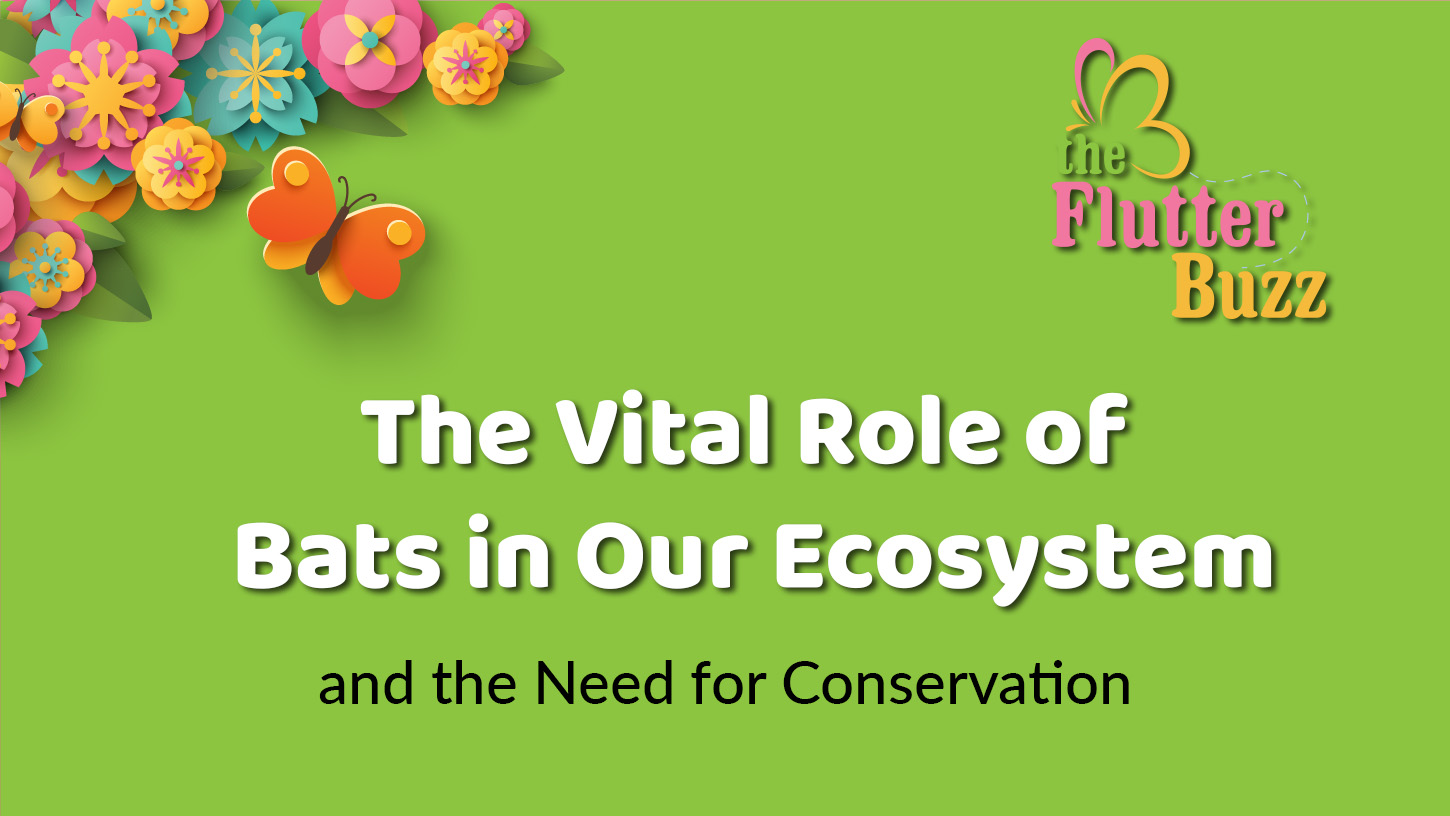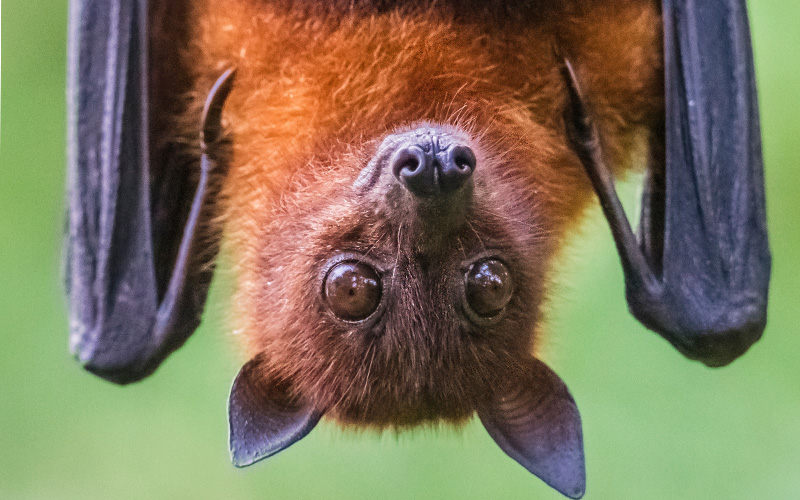
30 Oct The Vital Role of Bats in Our Ecosystem and the Need for Conservation
Bats are among the most misunderstood animals, often associated with myths and superstitions. However, they play indispensable roles in ecosystems around the world, benefiting biodiversity, agriculture, and human economies. Despite their importance, bats face numerous threats that put their populations at risk, which in turn can disrupt ecological balance. Understanding the ecological value of bats and advocating for their conservation are crucial steps toward sustaining a healthy environment.



The Ecological Importance of Bats
Bats are vital for various ecosystems due to their roles in insect control, pollination, and seed dispersal.
Insect Control
Insectivorous bats consume vast amounts of insects every night, including many pests that damage crops. A single bat can eat thousands of insects in just one hour, significantly reducing the need for chemical pesticides. In the United States alone, the pest-control services provided by bats save agriculture an estimated $3.7 billion per year.
Pollination
Many species of bats are essential pollinators, particularly in tropical and desert regions. Bats pollinate over 500 plant species worldwide, including economically valuable ones such as bananas, mangos, guavas, agaves, and durian. By visiting flowers to feed on nectar, bats help facilitate the reproduction of these plants, some of which have flowers specifically adapted to bat pollinators, such as large, white, and fragrant blooms that open at night.
Seed Dispersal
In addition to pollination, frugivorous (fruit-eating) bats play a key role in seed dispersal, particularly in tropical forests. They help regenerate forests by spreading seeds over large areas, often to places where trees are sparse. This function is especially crucial for rainforests, as bats are among the few animals that can carry seeds across open areas and ensure forest growth and connectivity.
Threats to Bats
Despite their ecological value, bats are under threat from various factors, including habitat loss, disease, climate change, and human disturbance.
Habitat Loss
Deforestation, urban development, and agricultural expansion all contribute to the destruction of natural habitats that bats rely on. When bats lose their roosting sites and feeding grounds, their populations decline, and ecosystems are left without their valuable services.
White-nose Syndrome (WNS)
White-nose syndrome is a devastating fungal disease that affects hibernating bats and has killed millions in North America since it was first detected in 2006. The disease, caused by Pseudogymnoascus destructans, disrupts hibernation, causing bats to wake frequently and exhaust their fat reserves, leading to starvation and death.
Climate Change
Changing temperatures and weather patterns can disrupt bat migration, alter their food sources, and force them to relocate. Droughts, in particular, impact the availability of insects and water sources essential for bat survival.
Human Disturbance
Bat populations are also affected by intentional and unintentional human disturbances. From vandalizing roosts to the use of pesticides that poison their food sources, human actions often have adverse effects on bat populations.
Types of Conservation Efforts
Protecting bats and their habitats is critical to maintaining balanced ecosystems. Conservation strategies involve multiple approaches, from habitat preservation to public education.
Habitat Protection
One of the most effective ways to protect bats is by preserving and restoring their natural habitats. Protected areas, like national parks and reserves, provide safe havens where bats can roost, feed, and reproduce without human interference. In urban areas, promoting green spaces and setting up bat-friendly structures such as bat boxes can also help.
Research and Monitoring
Understanding the habits, population trends, and health of bat species allows conservationists to identify threats early and implement targeted interventions. Tracking technology, such as radio telemetry, has been valuable for monitoring bat movements and migration patterns, offering insights into habitat needs.
Legal Protection
Many bat species are now protected by national and international laws. For example, the Endangered Species Act in the United States lists several bat species, making it illegal to harm or disturb them. Globally, treaties like the Agreement on the Conservation of Populations of European Bats (EUROBATS) foster cross-border cooperation to protect bats.
Combating White-nose Syndrome
To combat WNS, scientists and conservationists have implemented several strategies, such as disinfecting caves and developing treatments to reduce fungal spread. Research efforts are ongoing to better understand the fungus and find potential cures, but mitigating the disease requires substantial funding and international collaboration.
Public Education and Outreach
Changing public perception about bats is essential for conservation. Misunderstandings and fear often lead to harm against bats. Educational campaigns, such as Bat Week, help raise awareness of the importance of bats and promote bat-friendly practices.
How You Can Help
- Install a bat house: Bat houses provide safe roosting spaces, especially in areas where natural habitats are scarce.
- Reduce pesticide use: By minimizing pesticide use, you help protect the insects that bats rely on for food.
- Support conservation organizations: Contributing to organizations focused on bat conservation, such as Bat Conservation International, can make a difference in global conservation efforts.
- Share knowledge: Educate friends and family about the value of bats and their role in ecosystems.
Conclusion
Bats are extraordinary creatures whose contributions to ecosystems and agriculture are invaluable. Despite facing significant threats, there is hope for their populations if we commit to active conservation efforts and greater public awareness. By taking steps to protect bats, we are not only preserving biodiversity but also ensuring a healthy, balanced ecosystem that benefits both wildlife and humanity.
Sources
- Boyles, J. G., Cryan, P. M., McCracken, G. F., & Kunz, T. H. (2011). Economic importance of bats in agriculture. Science, 332(6025), 41-42.
- Fleming, T. H., & Sosa, V. J. (1994). Effects of nectarivorous and frugivorous mammals on the reproductive success of plants. Oecologia, 98(2), 178-184.
- Muscarella, R., & Fleming, T. H. (2007). The role of frugivorous bats in tropical forest succession. Biotropica, 39(4), 518-529.
- Frick, W. F., Pollock, J. F., Hicks, A. C., Langwig, K. E., Reynolds, D. S., Turner, G. G., … & Kunz, T. H. (2010). An emerging disease causes regional population collapse of a common North American bat species. Science, 329(5992), 679-682.
- O’Shea, T. J., & Bogan, M. A. (2003). Monitoring trends in bat populations of the United States and territories: Problems and prospects. U.S. Geological Survey.
- EUROBATS Secretariat. (2014). Agreement on the Conservation of Populations of European Bats. UNEP/EUROBATS.
- Bat Conservation International. (n.d.). Bat Wee
